On tears and detachment
Plus, the Antidote #33: five years of COVID, ME/CFS crash survival, sensory overload, and...nuns!
The Tonic is a lighthearted, heavily resourced newsletter for folks interested in learning about long COVID, ME/CFS, and other health conditions. Come for the info; stay for the whimsy. Or vice versa.
If you are new here and curious about the tools that have been helping me in my long COVID recovery, please check out the Recovery Tools series tab on my Substack site. (Please start with part one, as it includes an important disclaimer about how highly individualized recovery tools can be with a heterogenous illness like long COVID).
The Tonic is free to read - Amy is so happy you’re here! There is no paid subscription option here like with other Substack newsletters. However, if you are valuing the experience and are able, please consider a show of support by sending a gift of health, wellness, or joy from this Amazon wish list or this Throne wish list (for those who are loath to support Amazon). There’s something for every budget and any help is appreciated. Anyone who does gets a 📢 in an upcoming post (be sure to include a note with your gift). Thank you!
Big feels
I must admit, March has crept up on me, partly for good reasons (I’m more focused on just living my life) and for not-so-good ones (more on that later). So I can’t recall exactly when it hit me that March marks the fifth anniversary of the pandemic, which also marks the fifth anniversary of my long COVID-causing infection and that of many other first wavers.
We of the first variant. Pioneers in uncharted waters of decrepitude and lasting organ damage. The first to experience the kind of WTF symptomology that made us feel that aliens had taken up residence in our bodies. Yay?
My expos-iversary was on March 12th, the day before the lockdown-iversary on March 13th. I went down to the domestic violence shelter and met with the team I helped manage there. We anticipated that we might have a COVID-positive victim or family soon, since our part of New York was super close to one of the early hot zones. Turns out, we were right. Within a week, one of our single adults tested positive. We were the first shelter in the state with a positive resident, and our state regulating agency used us as the model for helping other shelters navigate providing services safely to the quarantined residents and the uninfected alike. I will never forget the visual of our local department of health entering our shelter in full hazmat suits, straight out of the movie Contagion. Wild times.
My first symptom (severe shortness of breath) didn’t start until March 25th. On the 26th, I got an email from the head of one of our partner organizations saying that one of their staff who was in the shelter on March 12th had tested positive. This is why I believe I contracted it that day; I had gotten fairly close to both this partner’s staff person (it was the first time I was meeting them) as well as to the shelter resident who later tested positive. We were not wearing masks by the 12th; no one had them yet.
There’s more to this origin story, but I’ve told it in other places, and rehashing it is not really my goal today. It’s more to reflect on being at the five-year mark.
In some ways, it has passed in a flash. In other ways, it seems like another lifetime ago, much the same as my parents’ deaths or other difficult times of my life. It’s like my brain has put such occurrences in some sort of trauma trinket box that only very occasionally gets opened and revisited. Mostly, I am not super interested in transporting myself back to those times. My body remembers how it felt to be there, and that’s probably enough to keep things in perspective.
I am fortunate to be on a recovery trajectory five years out. Not all first wavers can say the same, and that is heartbreaking. It feels less and less like scientific research is coming to save the day, even as hundreds of millions of us continue to suffer globally. In the U.S., our current administration has scrubbed the words “long COVID” from all federal websites. We are actively being erased, along with so many of our trans, Black and brown friends (and there are many, many among us who identify as all three).
I was successful in securing my Social Security disability benefits before the presidential election. I am worried about how much longer I’ll have them given the erasure, and also the indiscriminate cost-cutting happening at the hands of an unelected, unqualified billionaire and the pimply teenage geeks in his midst. I feel even more worried for long hauler friends whose SSDI applications are in process. Plans are already underway at the Social Security Administration to massively reduce staffing and leases for service centers are being canceled. (The SSA also uses an archaic computer system that only the most veteran employees there know how to use properly - ugh). So aside from reduced staffing slowing down application review/approval, if the government decides it doesn’t “believe in” your disabling illness, what’s to keep them from eliminating the possibility of benefits to support you? (Even though we’ve worked the requisite 40 quarters that make us eligible for these benefits, with the understanding that they’d be here for us if/when we needed them?). It’s infuriating, outrageous, and terrifying, all at once.
(For a great piece on how five years feels to many of us, check out Half a decade of Long COVID by Miles Griffis of The Sick Times).
So, yeah…big feels. Although I am generally feeling positive toward where I am at in life these days, it is really hard to hold onto that feeling all day, every day, given what is going on around us. This five-year reflection is a mixed bag, for sure.
I’ll briefly mention here that The Tonic has recently surpassed 2,000 subscribers. Pretty cool, yes? Normally, I’d be having big feels around this too, except that I am pretty sure that at least 88 of my 2,087 subscribers are bots or scammers, so it’s probably not a real number. Some of them have names like Jelly Roll or keanureeves30547. Others have interesting sounding names with profile pics that are very obviously AI hypermasculine “men.” I have yet to report these to Substack because I keep forgetting.
If you are a sentient being and are one of my subscribers, I’d like to thank you for being here, and for reading, commenting, and sharing. There are a lot of great newsletters here on Substack where you could be spending your time instead, and I am just grateful you sometimes give my long posts a scroll.
Now onto our main topic this week.
On tears and detachment
If you’ve read the title of this week’s post as tears (crying) and detachment (distancing), I wouldn’t blame you, given where the post has been so far. Suffering from chronic illnesses like long COVID, ME/CFS, fibromyalgia, chronic Lyme, EDS, POTS, MCAS, and/or dysautonomia can certainly make you cry tears from pain, suffering, and grief. Detachment may come with having to isolate from friends, family, and society in general in order to conserve energy or keep ourselves safe from infection and further illness. It can also come from the emotional dissociation many of us do as a protective measure, often as a trauma response.
And of course, we might cry tears of joy when we finally get the diagnosis we’ve fought to get, or when a treatment makes us feel a little better, or when we begin to get parts of our life back. We might view detachment as a healthy mechanism for teaching our brains that these illnesses are not our whole identities. In these ways, tears and detachment can also serve us in a positive sense.
But, none of that is what this post is about this week. Instead, the following is a cautionary tale.
A little over two weeks ago, Baldy (my husband, for the uninitiated) began complaining of suddenly seeing what he described as black floaters in his right eye. These were pretty disturbing to him because they were not like regular floaters, which are just kind of annoying. They were obstructing his vision a bit. By that night, they had abated.
But the next morning at work, they were back, along with a strange shadow moving across his field of vision. He very wisely called our trusted eye doctor (trusted because she’s super smart and - get this - actually spoke to me, unprompted, about the specific ways long COVID can affect the eyes). Her office told him to come in immediately. YIKES.
Once there, they took a picture of the back of the eye and the news was bleak. She told him she could see that his retina was starting to tear (as in, rip), and that this explained the intermittent visual disturbances. She told him this would not resolve on its own and would in fact get worse. If the retina detached entirely, he risked losing vision in his right eye permanently.
This was on a Wednesday. The surgeon she recommended he see immediately could not get him in until Friday afternoon at 4:15. Over the two days in between, in addition to the black floaters and the shadows, he had moments of flashing lights. Terrifying stuff.
After two hours with the surgeon getting all sorts of tests, the news got even more dire: Baldy needed surgery immediately, because the tear was getting worse. This surgeon could not perform the procedure, because he would not be able to get operating room time over the weekend, and come Monday, the tear would be so bad that he said he wouldn’t operate. Our only option was to head into Manhattan to a place called NYC Retina, where they perform emergency retinal surgery at all hours.
I will save you the full details of how panicked we were, how I had to drive him there and back into Manhattan in the dark (some of you may know what it means to drive at any time of day into NYC or Manhattan, let alone in the dark; it is not for the faint of heart). How he had to have his eye numbed multiple times but it never got fully numb, so he felt the needle going in. How the NYC surgeon scared us with his disclaimers: it may not ‘take’ the first time, you may need another surgery, you may never gain full vision back in that eye. How exhausted we both were, how little quality sleep we got, and yet had to turn around and drive back into NYC (Queens this time) the next day for a follow up appointment.
And then the doozy: how, because the surgery was happening in an outpatient surgical suite instead of in a hospital operating room, insurance wouldn’t cover the cost of the facility/equipment. They wouldn’t even book the surgery over the phone without a $5k deposit, and then arranged a payment plan with us for the remaining $5k.
What were we to do - this was Baldy’s vision we were talking about?? Visually impaired = major quality of life issues, as well as instant full retirement from the security work he does that pays a lot of our bills. I took out my credit card and we didn’t look back.
Once at the facility, we had a lengthy conversation with the surgeon about why services at his facility were not covered by any insurance. He gave us an impassioned speech on how he was actively working on getting it covered, so that people like us (and also, people who can’t whip out a credit card on the spot) could have access to this life-altering emergency surgery. Apparently, in addition to insurance companies not covering it on an outpatient basis, most hospitals would not open up OR time on overnights and weekends to do this type of surgery; it wasn’t enough of a money maker for them. The injustices of it all just kept coming. The thing is, the surgeon argued, colonoscopies and certain surgical procedures are now covered in outpatient settings. Why should retinal repair be any different?
Baldy had the surgery and was told to take a week off from work, to avoid exertion (doing anything where his head would be below the level of his heart), and, in his case, to only sleep on his left side. The surgery entailed having a gas bubble placed in the eye that, if all went according to plan, would slowly disappear over 10-14 days as the bubble moved to where the tear was and sealed up the retina. So far, he is healing well and his vision is being restored more and more each day. He has a few small floaters that have appeared, though he read online that these are normal during healing and could take a month to resolve.
Retinal detachment is usually a result of aging or due to a trauma to the eye. It can also be hereditary, so Baldy’s relatives are now on alert.
Here’s the cautionary tale part, according to the National Eye Institute of the NIH:
Retinal detachment is a medical emergency. If you have symptoms of a detached retina, it’s important to go to your eye doctor or the emergency room right away.
When your retina begins detaching, you may not have symptoms immediately. But as it gets worse, you may not be able to see as clearly as normal, and you may notice other sudden symptoms, including:
➡️ A lot of new floaters (small dark spots or squiggly lines that float across your vision)
➡️ Flashes of light in one eye or both eyes
➡️ A dark shadow or “curtain” on the sides or in the middle of your field of vision
Some conditions can put you more at risk for detachment, such as diabetes, extreme nearsightedness, and yes, possibly even long COVID (interestingly, I recently came across this study on reduced retinal capillary perfusion in non-hospitalized, neuro-long COVID patients. This is what our aforementioned brilliant eye doctor has told me she looks for when she’s reviewing my scans).
If any of these symptoms come on suddenly for you or someone you know, get thee to an experienced eye doctor immediately (call and tell them what’s happening; they’ll probably squeeze you right in). If at all possible, find a surgeon to go to well before a weekend hits, and hopefully you can get the emergency procedure covered by insurance.
For our part, Baldy and I recorded a brief video for our surgeon to use in his upcoming insurance advocacy efforts; he had a presentation scheduled for exactly a week after the surgery. Hopefully he will be successful soon, so the policies change for anyone coming after us.
Special shout-out to my sister Diana and to our dear friend SueB for their love, support, more love, and homemade soups during this time.
Time for links.
The Antidote #33
COVID, Long COVID, and ME/CFS
🦠 COVID-19: The next five years. Also, 5 years since the pandemic started, long COVID research is gaining ground.
😬 The next four years: a grim time for long Covid sufferers in the U.S.
😵💫 ME/CFS and long COVID:
with a deeper look at the overlapping diagnoses.🧠 COVID and dementia: what is known about the virus’s impact on the brain.
👩🏽🦳 COVID as a feminist issue: a look at the five-year point. Substack’s own
is interviewed in this one. Check it out and also subscribe to her newsletter while you’re at it.💉 Post-vaccination syndrome: Cort Johnson of Health Rising with a fair and balanced look at the recent study out of Yale LISTEN. I’m tired of Akiko Iwasaki getting shit on for being brave enough to add vax-injured long haulers to her long COVID research.
😷 Masks:
, a mental health professional, breaks down all the reasons people are still wearing them.🌬️ How long is your N95 effective for? Check out this super interesting data dive on why you should change out your mask before the 40-hour mark.
🧎🏽♀️ Hypermobility and long COVID: telling many long haulers what they already know, this study shows how connective tissue disorders are a risk factor for LC.
📖 ME/CFS: a crash survival guide by the renowned Bateman Horne Center.
💓 Dysautonomia: decoding it in long COVID, by the
.🌎 Long COVID in Mexico: facing gaslighting and erasure in the absence of clear clinical guidelines.
📢 Long COVID Awareness Week: is happening now, March 10-16. Check out the COVID-19 Longhauler Advocacy Project for ways you can participate in raising awareness.
Webinars/conferences/podcasts/videos
⏰ What now, what next?: a webinar by Long COVID Justice on how we can understand this moment with an intersectional and cross-movement lens around COVID, Long COVID, health, healing, and disability justice.
💪🏽 Resisting COVID Denialism: apply to join this community of practice (a practice space to collaborate with other people that are resisting COVID denialism and to strengthen + build deeper connections outside of social media).
🩸 Menopause advocacy: a citizen’s guide, delivered by Let’s Talk Menopause! via webinar on March 18th at 12pm ET. Register here.
Health miscellany
💗 Pulse oximeters: if you’ve been with The Tonic for a while, you know we’ve been following the much-needed changes made to pulse oximetry for folks with melanated skin. Well, there’s this - new FDA pulse oximetry guidelines could stall under Trump. <sigh>…it’s hard not to feel like they actively want people to suffer and die.
🤳🏽 Screen time: here’s what will help you put down your phone (I mean, after you’re done reading The Tonic, of course).
💊 Vitamins and supplements: are they good for you? Are they safe?
🧠 Alzheimer’s and menopause: tau buildup is linked to late hormone therapy or early menopause (free MedPage Today account required).
😖 Sensory Overload: a new documentary on Hulu.
⚕️ Trans and intersex health: these Americans’ health could get worse under Trump.
🍸 Alcohol: what’s your relationship with it and why should you care? A great post by
.☕ Coffee Creamer Recall: More Than 75,000 Bottles Pulled From Shelves Across the US.
🧴 Retinol: the skin care ingredient with a horrifying history. And my people wonder why Black folks often don’t trust the medical research field.
🥚 Pasture-raised eggs: we’ve been eating them for a while here, because hens that eat bugs and grass and things they’re supposed to generally produce tastier, healthier eggs. And although these hens can also catch bird flu, their less-crowded conditions make it a bit less likely.
♿ Disability-inclusive AI: best practices for building this ecosystem.
Now stick around for…
🥳 The After-party 🥳
Added resources, joy, tomfoolery, and buffoonery
❤️🩹 Cured! Amazing: Long Island man is first in New York history to be cured of sickle cell anemia. Science is everything.
🎲 Fuzzy dice and handicap parking placards: Is It Illegal to Hang Things From Your Rearview Mirror?
🙏🏽 Eat, pray, love: Meet the twenty-something nuns who ditched dating. Fascinating!
🦋 Some positive environmental news: the Eastern monarch butterfly population doubles in a year.
🐦⬛ Crows and their noises: how AI is revealing the language of the birds. Pretty neat.
😡 File this under ‘buffoonery’: How Trump’s gutting of the Education Department harms kids with disabilities.
🤦🏻 Buffoon of the week: every week, there are SO VERY MANY BUFFOONS to choose from, many of whom are running our government (elected and unelected), but this week’s honor goes to 18yo Florida woman Evelina Fabianski, who tried to go all Carrie Underwood on her ex, but wound up vandalizing the wrong car.
🏆 Winner of the week: Rest in peace Mr. James Harrison, the Australian man who donated his plasma for six decades and is thought to have saved the lives of 2.4 million babies. If heaven exists, he’s up there giving his veins a well-deserved rest.
🐈⬛ 💩 And finally, it’s this week’s Cat Dump. Just one pic this week. I propose that it takes the place of the Elmo fire meme.








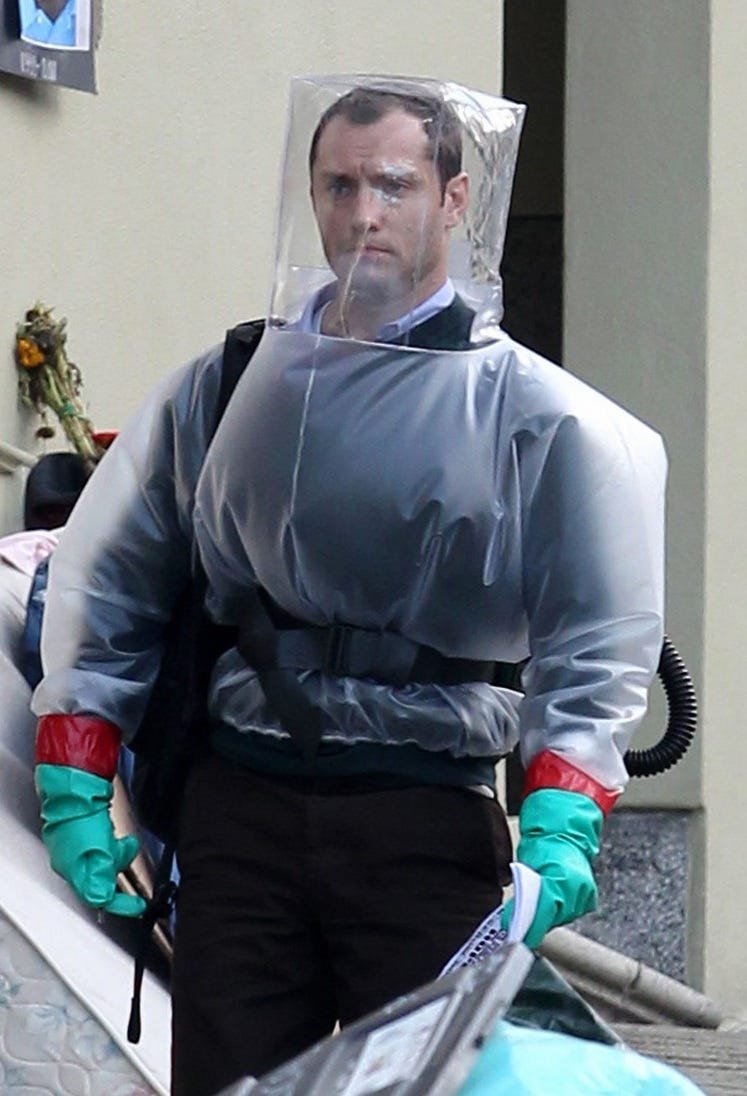




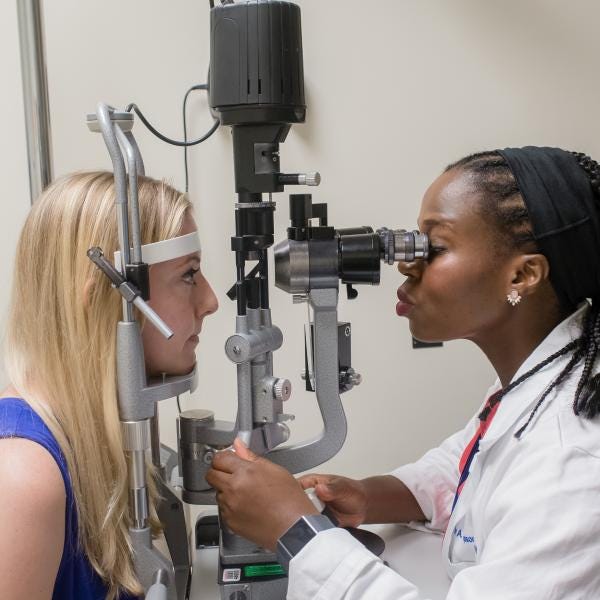
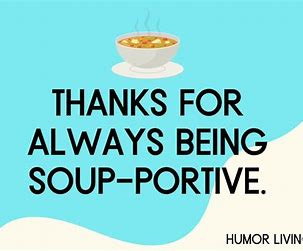


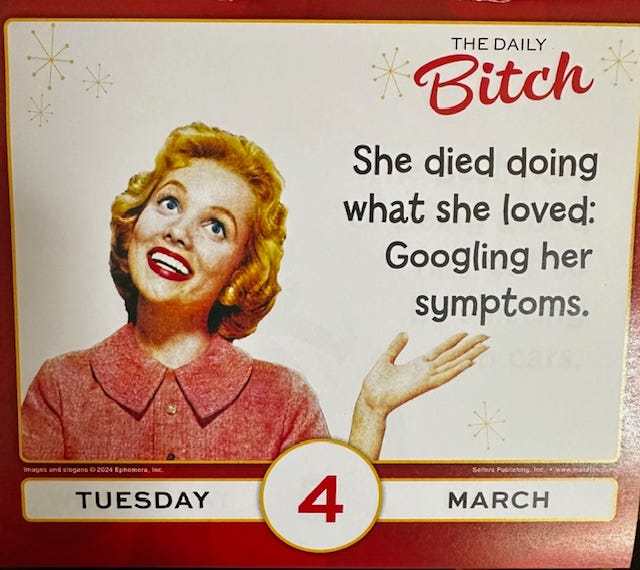

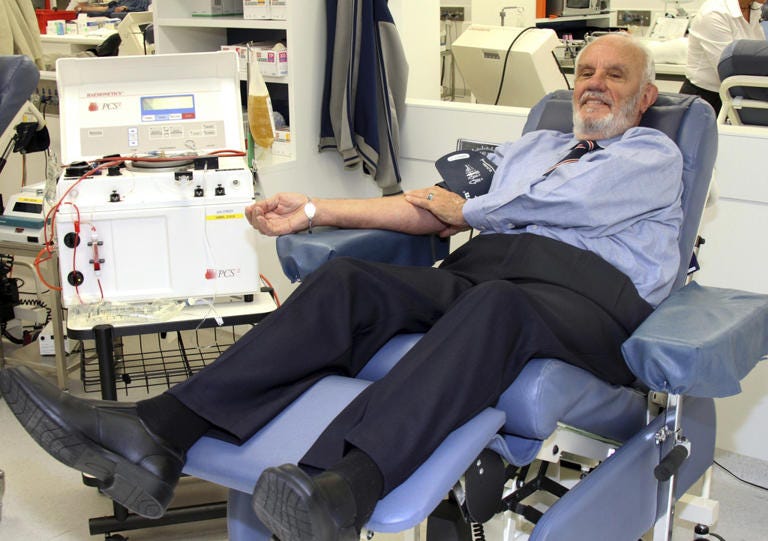

What a frightening ordeal. Hoping all is well, x.
Thanks for the hat tip to NYC Retina. My daughter has moved to the Hudson Valley and gets her care for a potentially blinding chronic retinal condition in NJ, but I’ve filed this info away in case she ever needs emergency care. Scary stuff. Hope he continues to improve.